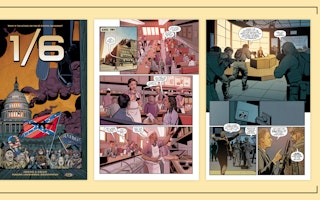How to Pitch Your Health Story to TV
By Joyce Ho
As part of my Global Health Media Fellowship, I have been spending the last few months working for Dr. Nancy Snyderman, who appears on The Today Show, Nightly News, and Rock Center. During that time, I have been learning a lot about how health stories get onto TV. On a day to day basis, we get our stories from looking at newspapers and watching the news. Every morning we do a comprehensive sweep of all the major newspapers to check for health stories. In the evening, we check eurekalert.com for a list of all the embargoed studies that will be published in peer-reviewed journals the next day. Studies coming out with new statistics and figures make for great news pieces. Newspapers and journals comprise most of the sources for our stories, but another potential reservoir of ideas is our inbox full of pitches. The medical team producers are pitched dozens of stories a day; however, only a select handful will be picked up to be transformed into a story segment. Here are some suggestions for those seeking coverage of their issue, based on my experience:
- Keep the pitch short and sweet. One of the most frustrating things for a producer is to receive page long pitches that clog up her inbox and take too long to read. Producers receive so much mail a day that they have to constantly empty out their inboxes—chances are your pitch will be tossed unless it makes a good first impression. The pitch should be concise, to the point, and explain what makes your story timely, relevant, and exciting to the show’s viewers.
- Think about the viewership. Each show I work for has a distinct personality and viewership—Nightly News is hard hitting, up-to-date news for professionals who are getting off of work; The Today Show covers everything from cooking and fashion to news and medicine for stay-at-home moms and professionals as they are leaving for work; and Rock Center is an edgy news magazine show for teens and adults. A more technical science piece may make it on Nightly News, but not on The Today Show because of different audience preferences.
- Make the producers’ jobs easier. Ways of doing this include, as mentioned before, tailoring your story for the appropriate audience. Describe why the show’s target audience will care about what you have to say. Make the show realize that having your story on air will improve their ratings. Write out possible interview questions and responses, and identify characters to appear on the segment. Instead of making the producers think about how your story will fit into their show, write it out for them.
- Share past media exposure. If your organization has been featured in the media before, include it in the pitch. Producers always want to see beforehand whether the characters in the story are eloquent speakers, easy to understand, and relatable to the American public. Sharing such media examples also shows that your story is one worth telling since other media organizations have covered it in the past.
- Follow up, but don’t overdo it. Because of the high volume of emails received in a day, it may take a few tries to receive a response. Try to be patient though—if you call many times in a row and the producer tells you he or she will contact back if interested, do not keep dialing them. If there is initial interest but then you don’t hear back after a while, ask the producer what you can do to help. This could include finding characters or putting together a research kit for them. Either way, follow up but do not be so persistent to the point that the producers stop responding.
- If possible, pitch through a communications officer or public relations manager. Who the pitch comes from does not ultimately decide whether or not producers take the pitch. What does matter is clarity of the pitch and ease of the partnership. Oftentimes a public relations or communications officer knows how to package a story better than the expert who actually did the research. Experts tend to use a lot of field-specific jargon, and producers do not like that. Producers also prefer working with communications officers because these individuals are well trained in working with the media—the producers can count on a smooth partnership without having to explain the rules of the game from scratch.
There are many more tips for pitching but these are the six that I consider most important based on my experience. Please share your own thoughts and experiences on pitching stories to the media!
Joyce Ho, a medical student at Stanford University School of Medicine, is the inaugural Stanford-NBC News Global Health Media Fellow, which is funded in part by the Open Society Foundations’ Health Media Initiative.


